Josie’s story: as genomics has grown, so too has hope for her future
When my niece Josie was born, genomics was not ready to diagnose her condition. Now my selfless, capable sister has hope there will one day be a treatment for Josie’s incredibly rare syndrome.
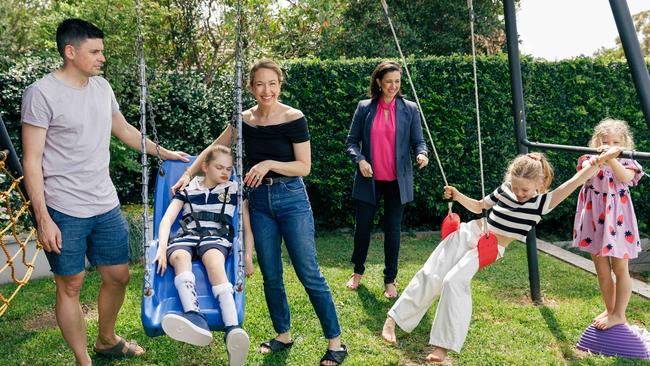
My niece Josie’s little body is atop starched white sheets, the hospital bed seeming enormous as she lies drained and listless. After months of struggle, unable to feed and in near-constant distress, the seven-month-old had given up. Refusing to try any more to drink a bottle, she was showing us in no uncertain terms that it was simply too hard.
The day Josie was born 12 years ago after a textbook labour with nine out of 10 Apgars, everything seemed perfect. I sat by my sister’s side in the maternity ward cradling this precious bundle – my sister’s firstborn, our mother’s second grandchild and a cousin to my daughter – staring in wonder at this serene cherub with rosebud lips, a button nose and lightly flushed porcelain skin.
Born weighing 2.95kg, she was so tiny that had the stripey hospital blanket not been tucked carefully underneath Josie’s little chin, she might have disappeared inside it.
For new mothers, the oxytocin rush of birth is heady, and continues when baby latches to breast. But these hormone waves as baby gently suckles eluded my sister, Sara Fishwick. Breastfeeding is rarely easy and must be learned by mother and baby. But no matter what Sara did, no matter how hard she tried, the latch and the gentle rhythmical suck just didn’t come instinctively for Josie. It was never to come easily at all.
“As a first-time mother, I had no idea that this wasn’t just normal,” Sara says. “She was being fed with a syringe. She’d just cry and cry and cry, all the time, all day and all through the night. I remember the nurses taking her and trying to settle her, and I actually overheard them in the corridor one morning at the handover, saying, ‘I’m not sure what’s going on with this lady and her baby’. I remember hearing that and thinking, oh my gosh, if they don’t know what’s going on, I certainly don’t.”
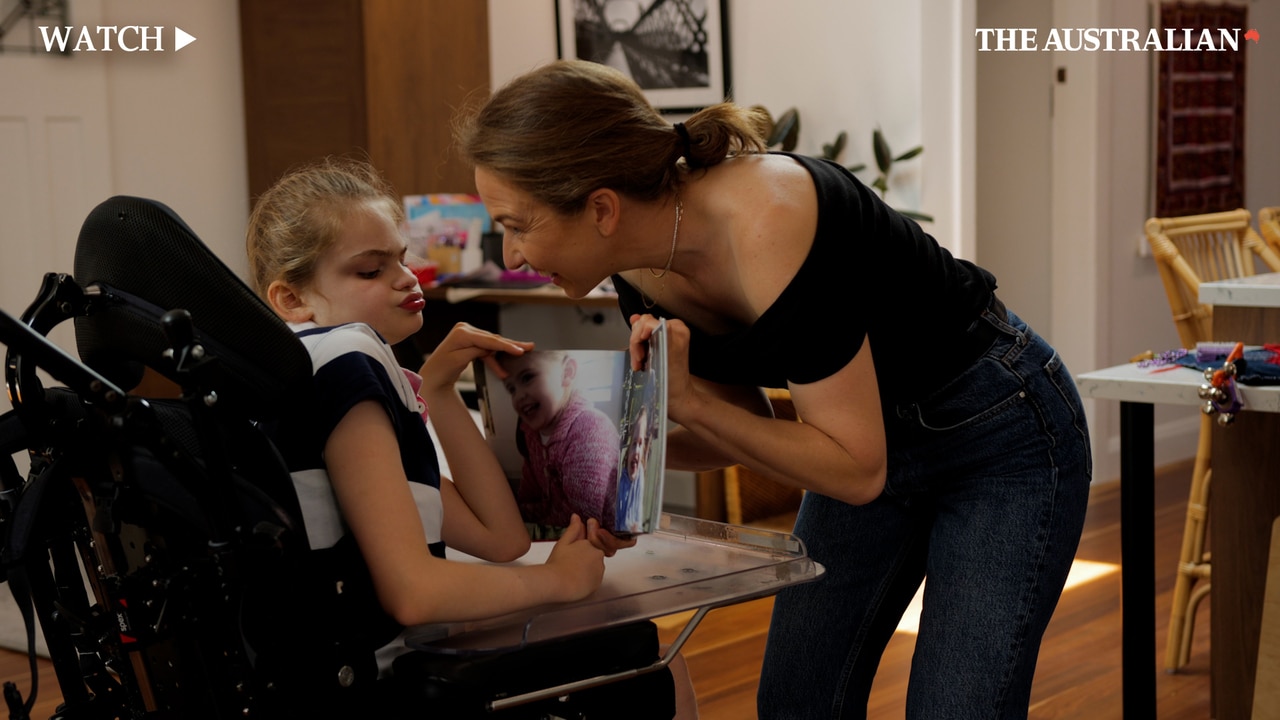
The struggle continued at home. Almost all of the time, Josie was unable to be consoled. Sara eventually tried bottle feeding, but it wasn’t a lot better: “Her weight was always a constant struggle and she was way off the bottom of the dreaded chart.”
At around six weeks, Josie was diagnosed with severe hip dysplasia that required a brace. As she grew and Sara carried her around in a baby carrier, I remember clearly the jerky movements of Josie’s body – she would thrash back and forth quite violently against my sister’s chest. I had seen many unsettled babies, but I had never seen anything like this. My concerns grew by the day. Paediatricians tried to help but had no answers.
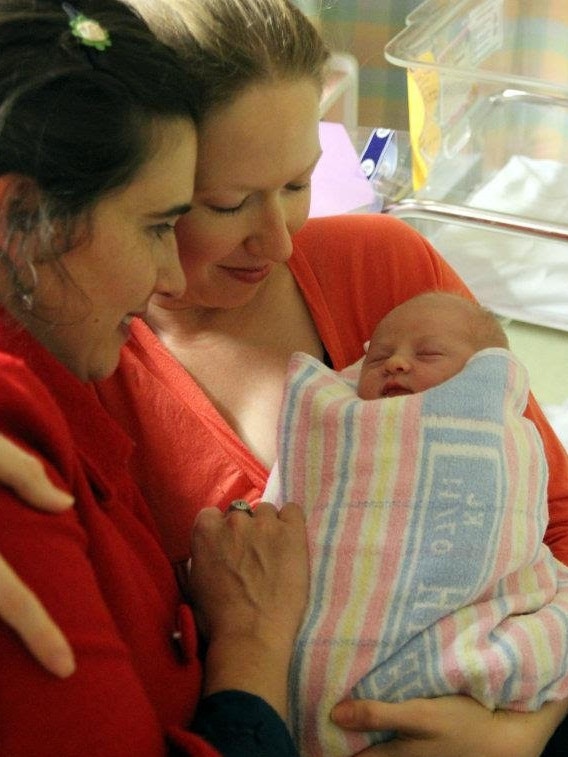
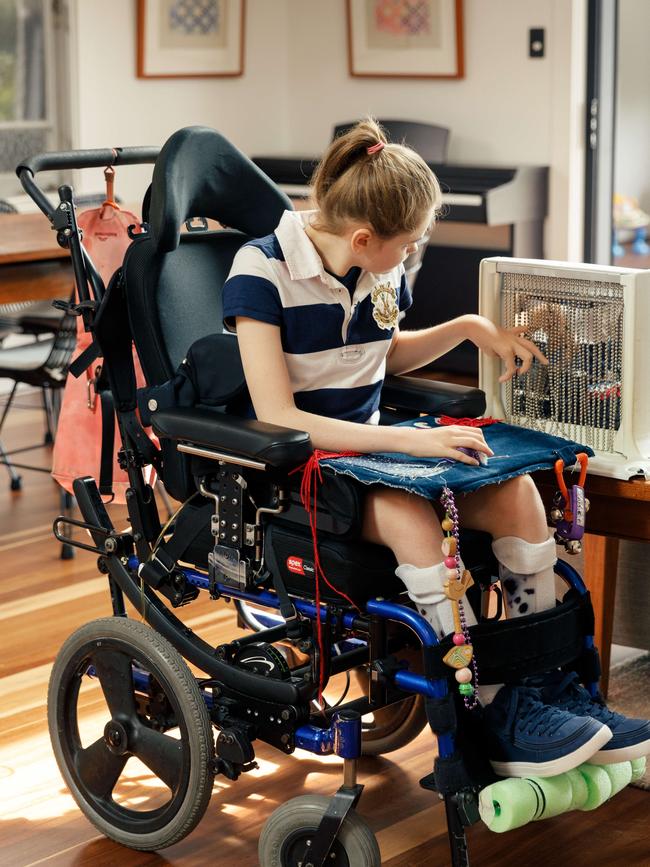
I am not sure when a human’s sense of personal autonomy develops, or how, but all I know is that at the age of seven months, Josie asserted it. She would not eat and she would not drink. She was taken to the Sydney Children’s Hospital. Taking in the image of Josie lying dehydrated and lifeless as I rushed to the paediatric ward on that late summer morning, it was clear to me that my niece, who had tried so hard to feed and thrive, had reached a point of utter exhausted refusal. And who could blame her?
“We were so scared, overwhelmed and exhausted we didn’t know what to do,” Sara says. “All you want to do is feed your child and see her grow and thrive, and to have no power over that is heartbreaking.
“It was at that point that we got a lot of doctors around us, we saw a geneticist and a neurologist. Josie was put onto a feeding tube. They did a lumbar puncture and performed a whole bunch of genetic testing. Nothing came up initially and the doctors said ‘it’s obvious that she has something rare’.
“And at the time, they explained to me that it was highly likely we’d never find out, despite doing that testing, because there’s so much unknown in genetics, but we were keen to try and find some answers.
“That’s when they said to me, ‘look, it’s very serious, and we don’t think she’ll ever walk or talk’. That was obviously a moment I’ll never forget.”
It was early 2013, and genomic medicine was on the crest of rapid advancement. The Fishwick family, through the Sydney Children’s Hospital, were linked with the Garvan Institute of Medical Research, which performed exome mapping of Josie’s DNA and that of Sara and Scott. For almost three anxious years, we all waited for a result. Doctors downplayed expectations, explaining the process of working out the fault in Josie’s genes – we all have three billion base pairs of DNA, equivalent to 1000 copies of War and Peace – was like looking for a needle in a haystack. Sara and Scott held off even contemplating having any more children.
The human genome was first mapped 20 years ago in a major milestone for science. Today, whole genome sequencing is possible to perform in as little as three days. Access to massive, publicly available international datasets means scientists now can, with the assistance of AI and advanced computational data analysis tools, identify harmful mutations in a matter of weeks.
“You’re always hoping that, somehow, she’ll still meet some of the milestones. It was really devastating to see that it’s likely that Josie never would, but on the other hand, it was wonderful, because to read the list of symptoms all of a sudden validated everything we’d been through for the past three years, to realise it wasn’t something we had done that had caused this.” – Sara Fishwick
In September 2015, the call from clinical geneticist Professor Edwin Kirk came. “He said he couldn’t believe it but they found what she had: FOXG1 Syndrome.”
FOXG1 syndrome is a neurological condition caused by not having enough of a critical functional protein in the brain. The FOXG1 gene is one of the most important genes for early brain development, and if a mutation exists in one of the pairs of this gene in the embryo’s DNA, it impairs neurological development in profound ways, causing developmental disabilities and medical complexities such as seizures and severe reflux. Most children with the condition are non-verbal, cannot walk, experience seizures, feeding problems, cortical vision impairment, movement disorders, and developmental delays.
It’s so rare that at the time Josie was diagnosed, there were about 10 documented cases worldwide. The FOXG1 gene was only identified in 2008, and the first case of FOXG1 syndrome was diagnosed in the United States three years later. There are now about 1100 children diagnosed internationally.
The development of genomic medicine has been an extraordinary worldwide collaborative project in which genetic and clinical data has been uploaded to public databases by scientists to assist each other’s research and clinical diagnosis. This was how scientists at the Garvan could match Josie’s gene signature to the newly diagnosed syndrome of FOXG1.
“It was devastating to get that diagnosis, because immediately you start Googling and you see pictures of older children with the condition,” Sara says. “You’re always hoping that, somehow, she’ll still meet some of the milestones. It was really devastating to see that it’s likely that Josie never would, but on the other hand, it was wonderful, because to read the list of symptoms all of a sudden validated everything we’d been through for the past three years, to realise it wasn’t something we had done that had caused this.
“It gave us a lot of answers, because we discovered that it was a very rare occurrence, and that it would be highly, highly unlikely that it would ever happen again. And so the geneticist said to us, ‘look, if you want to have other children now’s the time’.”
Understanding of the condition also meant for us, as a family, a greater understanding of what made Josie happy. Observation combined with some knowledge of how her brain was different meant that we were better able to respond to Josie in ways that established connection. She can’t focus on our faces with her eyes, but she loves music, singing and the sound of high-pitched voices, and would smile from ear to ear in response.
She knows the cadence of our voices when we speak to her, when we shower her with love and affection, and responds with delight, laughter and by reaching out her hands to touch us. Our late father was a jazz musician and Josie loved hearing him sing. Sara, who is the most organised, selfless and capable woman I have ever known, is amazingly resourceful in sourcing sensory toys that keep Josie engaged and entertained, often featuring bright shiny things that tinkle when Josie grabs them. One of her favourite toys has strings of silver beads hanging from a small frame. One Christmas, Sara and Scott helped Josie unwrap a ukulele from Santa. She loves to pluck the strings and takes delight in the mellifluous sounds she is able to create. Now, at 12, Josie likes to have her wheelchair pushed up to the family piano. It’s a soothing background sound amid family gatherings.
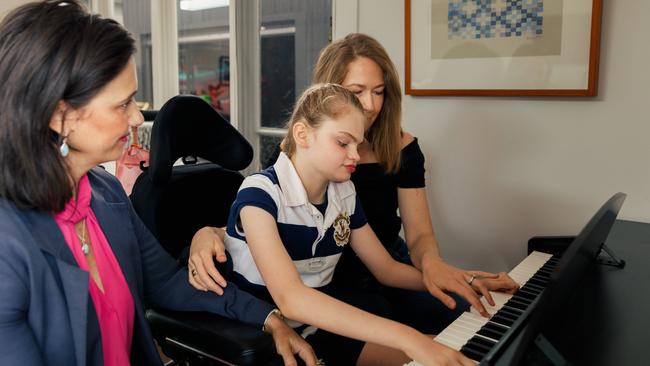
It took a long time for Sara and Scott to have the courage to try for another baby. They knew the chances of conceiving a baby with another rare gene defect were so low as to be almost zero, but when they finally took the step to conceive another child, in the second trimester Sara had an amniocentesis to rule out abnormalities.
In August 2016, Alice was born, and we were encouraged as she breastfed with gusto. In fact, as Alice grew, she did everything with gusto. Loud and boisterous, clever, irrepressibly wilful, a beautiful blonde firebrand, childhood sweethearts Sara and Scott had their hands full but the arduous daily demands of caring for Josie and a toddler of unusual spirit and intelligence did not shatter this couple’s extraordinary equanimity.
Isabelle was born in 2020, and conceiving that pregnancy too was a terrifying leap of faith. As a family we discussed the consideration that it would be a good idea for Josie to have two siblings, so that as Sara and Scott grew old, Alice had an ally in the task of supporting their cherished older sister. Isabelle is an eternal delight and Josie adores the extra company, the noise (there is a lot of noise), and the boundless love of her two sisters and that of her cousins, my two daughters.
As Sara’s sister, watching the way my five-years-younger sibling took in her stride the great adversity that life had dealt, with quiet dedication and fortitude, even continuing to work part-time in her job at the State Library of NSW managing their literary prizes, humbles me. What I know with utter certainty is that Josie chose the perfect parents.
As we sip tea in the Fishwick loungeroom, Scott looks after the constant caring duties in the background. There is the blended food to feed through Josie’s PEG tube in her stomach, four times a day. There is the nightly shower, washing Josie lovingly as she sits in a white plastic chair and brushing her teeth, then clipping her to the hoist that transports my niece from her purpose-built ensuite bathroom to her special bed which sits high with rails at the sides. There are the midnight ministrations when Josie can’t sleep. There is the daily lifting and clipping of Josie into her standing frame for an hour, otherwise she won’t poo. There are the nappies, which will be forever. There are the surgeries, coming up again this month when specialist paediatric orthopaedic surgeons will try for the third time to fix Josie’s hips. There is the heartbreak and anxiety, the almost insurmountable effort to muster the courage to let go and have trust, each time Josie spends time in respite care.
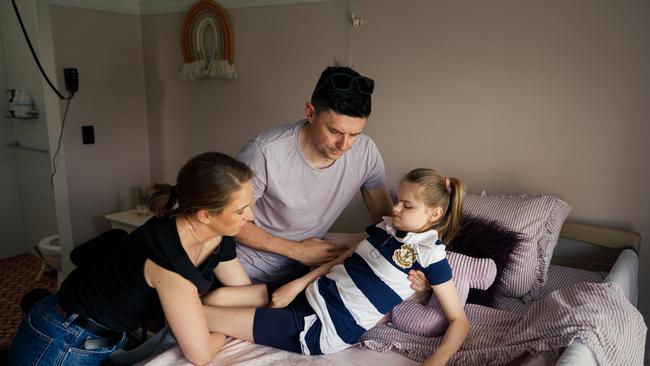
Now Sara and Scott are putting Josie’s story into the public realm, and they are so nervous and so am I, and it takes courage and it triggers tears all over again. And there have been so many tears. But now there is hope, and we all know that the glare of public storytelling is the vehicle to share that hope with the world, and that it can have real impacts on the advancement of scientific research and the aspirational end-game of funder backing for novel therapeutics. And that is why we are doing this.
So I brew a coffee this early November morning and sit down at my desk to interview American developmental biologist and neuroscientist Dr Soo-Kyung Lee, who was researching genetic disorders with her husband Dr Jae Lee, also a neuroscientist, when the couple gave birth to a baby with neurological disability. In what The New York Times described as “infinitesimal odds”, their daughter Yuna, now 14, was later diagnosed with FOXG1.
Yuna was born a year before the syndrome was even described. Dr Lee’s work, with the FOXG1 Research Foundation, was critical in advancing the understanding of this ultra-rare condition. Not only that, Dr Lee has now dedicated her life to developing a therapy to restore the FOXG1 protein in children’s brains in the hope that it will restore some aspects of critical functions in children, such as the ability to communicate. The University of Buffalo will open the first institute dedicated to FOXG1 research early next year.
You can read Dr Lee’s incredible personal story here.
“I thought ‘I’m in a very good position to do this study and develop this therapy’,” Dr Lee tells me over Zoom as she describes the progress of her research in testing a therapy she has developed for FOXG1 on mice. The therapy is delivered as an injection of a virus directly into the brain. The virus enters the brain’s cells and releases protein function chains which trigger the body to make more of the critical FOXG1 protein. It’s early-stage efficacy research in mice, with no guarantee of success, but Dr Lee is feeling optimistic given there are a number of similar drugs in clinical trials and one being used in the clinic in the US for similar monogenic diseases. She’s hoping to begin a clinical trial in children with FOXG1 syndrome in 2026.
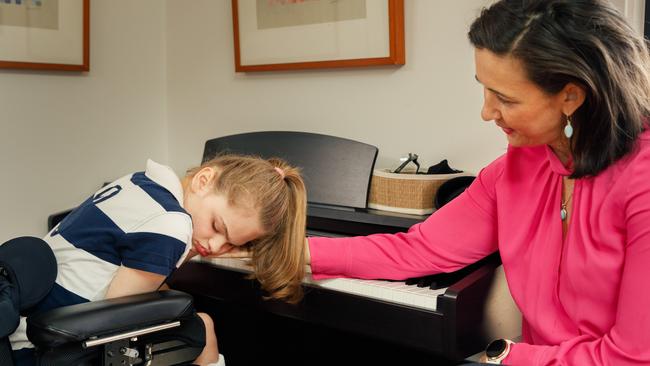
“We are pretty close to making the therapy available for FOXG1 syndrome,” Dr Lee says. “I’m very hopeful, you know, because of my special case, I tell the parents that if I’m not convinced to inject this drug into my daughter, I’m not going to pursue this drug for use in other children. So I’m very hopeful to take this drug to clinical trials.”
When Dr Lee sends me a photo album of pictures of Yuna, I can’t help but notice that Yuna is wheeled up to a piano in her scientist mum’s loungeroom, where she no doubt enjoys tinkling away, just like Josie. And I know that though rare disease is isolating, individual families are living the same story, and scientists and parents all over the world are uniting to usher in a new era of genomic medicine.
“It’s hard to not dream for the best,” Sara says as we discuss the promising Buffalo University research. “You know, there’s a lot of talk of finding a cure, which I think is a wonderful aspiration to have, but even just the little things, like if a therapy could help with reflux for these kids, which is just a day-to-day nightmare, or if it could help seizures, that would be amazing.
“With things like communication, obviously that would be a total dream to have Josie talk to us, but I temper my wishes so as not to get overexcited, because I think there’s still a long way to go.
“I just think that the more that can be done in this area of research for diagnosis – but then also, hopefully in the future, treatments – that would just make the world of difference.”
Donate to the FOXG1 Research Foundation here.



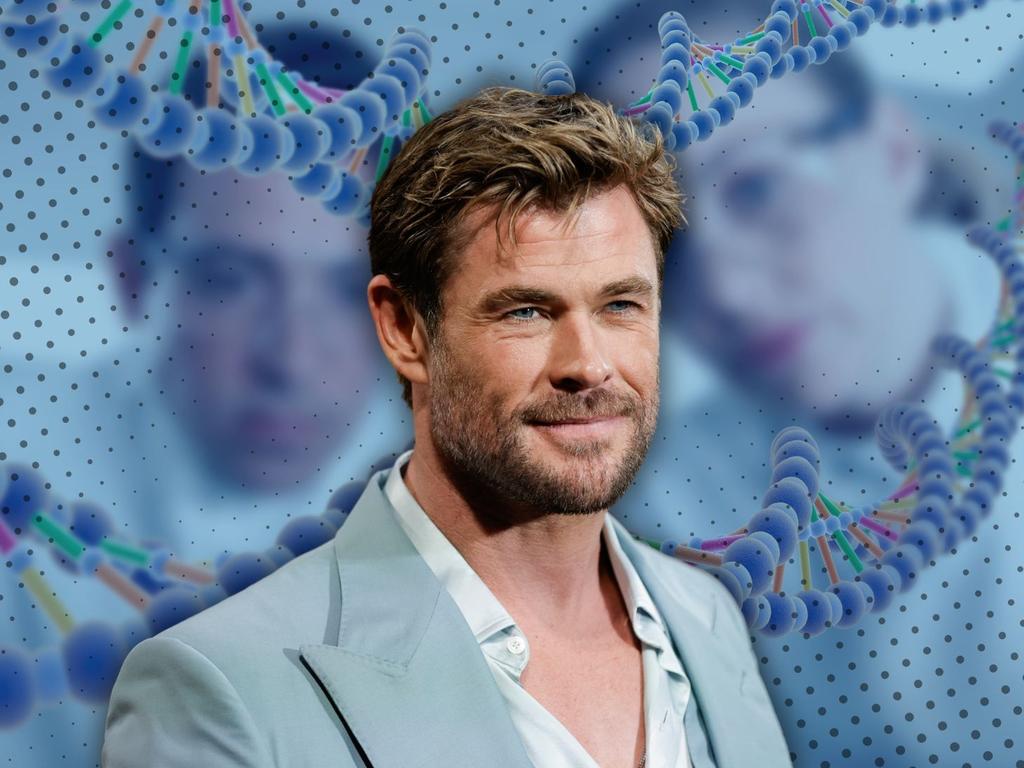

To join the conversation, please log in. Don't have an account? Register
Join the conversation, you are commenting as Logout